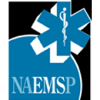This article originally appeared in the EMS MEd Reviews blog of the National Association of EMS Physicians and is reprinted here with permission.
By Adrien Quant, LP; Hashim Q. Zaidi, MD
“Depending on a patient’s needs and/or system resources, EMTs are sometimes the highest level of care a patient will receive during an ambulance transport.” — National EMS Scope of Practice Model (2019) [10]
Under the National EMS Scope of Practice Model (2019), EMTs are expected to initiate several critical airway and breathing interventions for a variety of medical and traumatic conditions [10]. Currently, in order to evaluate ventilation and perfusion, EMTs primarily rely on two tools – lung auscultation and pulse oximetry. Both tools have critical limitations.
Limitations of Lung Auscultation
Lung auscultation may help measure quality of ventilation, but it is deceptively complex, especially in the pre-hospital environment. [1,3,7] Lung auscultation can be negatively affected by the following factors:
-
Provider experience
-
Provider hearing ability
-
Stethoscope quality
-
Abnormal patient anatomy
-
Ambient noise
Limitations of Pulse Oximetry
Pulse oximetry estimates peripheral perfusion, but clinicians are often unaware there is a significant time delay between changes in the patient’s ventilatory status and changes in peripheral perfusion. Furthermore, unknown to many clinicians, pulse oximeter accuracy can be negatively affected by the following factors [4,5,11]:
-
Arrhythmia
-
Weak pulse (low QRS amplitude)
-
Significant hypoxemia/hypoxia
-
Significant hypotension
-
Patient motion (seizure, shivering, Parkinsonian tremors, etc…)
-
Patient’s peripheral temperature
-
Sickle cell vaso-occlusive crisis
-
Inhalation of carbon monoxide
-
Carboxyhemoglobinemia
-
Methemoglobinemia
-
Peripheral edema
-
Anemia
-
Sepsis
-
Bright ambient lighting
-
Patient skin color
Patient skin color can affect the accuracy of the pulse oximeter readings. The accuracy of pulse oximetry was originally validated in patient populations lacking racial diversity, and recent literature has revealed critical shortcomings. [2,8,12] If pulse oximetry alone is utilized for patient monitoring, Black patients are nearly three times more likely to develop undetected hypoxemia than White patients. [12] This unacceptable racial difference necessitates the utilization of other diagnostic tools, such as waveform capnography, to better assess patients during prehospital care.
In addition to the inherent limitations of pulse oximetry, many clinicians misunderstand and misuse pulse oximetry data when making clinical decisions. [6] Pulse oximetry is not a measure of ventilatory status. However, often unaware of this fact, many EMTs may use pulse oximetry data to justify inappropriate clinical decisions. EMTs often use pulse oximetry to determine the adequacy of a patient’s breathing, even though pulse oximetry is an insufficient tool to fully assess this issue. In addition, novice EMTs will often over-ventilate patients with low pulse oximetry readings, incorrectly believing that this will improve ventilatory status and instead causing harm. [9] Such errors are partially due to lack of training, but they are also indicative of the critical need for a better assessment tool - such as waveform capnography.
Summary
Under the National EMS Scope of Practice Model (2019), EMTs are expected to initiate several critical airway and breathing interventions; however, lung auscultation and pulse oximetry are often insufficient to assess ventilation and perfusion properly. [10] Both techniques have critical, inherent limitations. Furthermore, many EMTs may misunderstand pulse oximetry data, which can lead to poor clinical decisions. Under the National EMS Scope of Practice Model (2019) utilization of waveform capnography is considered an ALS skill. However, considering the critical limitations of lung auscultation and pulse oximetry, should we include waveform capnography in the EMT scope of practice? [10]
References
- Arts L, Lim EHT, Van de Ven PM, Heunks L, Tuinman PR (2020). The Diagnostic Accuracy of Lung Auscultation in Adult Patients With Acute Pulmonary Pathologies: A Meta-Analysis. Scientific Reports, 10(1), 7347. https://doi.org/10.1038/s41598-020-64405-6
- Bickler PE (2005). Effects of Skin Pigmentation on Pulse Oximeter Accuracy at Low Saturation. Anesthesiology. 102(4), 715–719. https://doi.org/10.1097/00000542-200504000-00004
- Brown LH, Gough JE, Bryan-Berg DM, Hunt RC. (1997). Assessment of Breath Sounds During Ambulance Transport. Annals of Emergency Medicine, 29(2), 228–231. https://doi.org/10.1016/S0196-0644(97)70273-7
- Chan E, Chan M, Chan M. (2013). Pulse Oximetry: Understanding its Basic Principles Facilitates Appreciation of its Limitations. Respiratory Medicine, 107(6), 789–799. https://doi.org/10.1016/j.rmed.2013.02.004
- DeMeulenaere S. (2007). Pulse Oximetry: Uses and Limitations. The Journal for Nurse Practitioners, 3(5), 312–317. https://doi.org/10.1016/j.nurpra.2007.02.021
- Elliott M, Tate R, Page K. (2006). Do Clinicians Know How to Use Pulse Oximetry? A Literature Review and Clinical Implications. Australian Critical Care, 19(4), 139–144. https://doi.org/10.1016/S1036-7314(06)80027-5
- Hafke-Dys H, Breborowicz A, Kleka P, Kocinski J, Biniakowski, A. (2019). The Accuracy of Lung Auscultation in the Practice of Physicians and Medical Students. PLOS ONE, 14(8), e0220606. https://doi.org/10.1371/journal.pone.0220606
- Jubran A, Tobin MJ. (1990). Reliability of Pulse Oximetry in Titrating Supplemental Oxygen Therapy in Ventilator-Dependent Patients. Chest, 97(6), 1420–1425. https://doi.org/10.1378/chest.97.6.1420
- Mumma JM, Durso FT, Dyes M, dela Cruz R, Fox VP, Hoey M. (2018). Bag Valve Mask Ventilation as a Perceptual-Cognitive Skill. Human Factors: The Journal of the Human Factors and Ergonomics Society, 60(2), 212–221. https://doi.org/10.1177/0018720817744729
- National Highway Traffic Safety Administration. (2019). National EMS Scope of Practice Model. National Highway Traffic Safety Administration.https://www.ems.gov/pdf/National_EMS_Scope_of_Practice_Model_2019.pdf
- Sinex JE (1999). Pulse Oximetry: Principles and limitations. The American Journal of Emergency Medicine, 17(1), 59–66. https://doi.org/10.1016/S0735-6757(99)90019-0
- Sjoding MW, Dickson RP, Iwashyna TJ, Gay SE, Valley TS. (2020). Racial Bias in Pulse Oximetry Measurement. New England Journal of Medicine, 383(25), 2477–2478. https://doi.org/10.1056/NEJMc2029240













